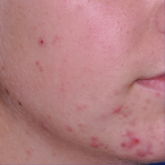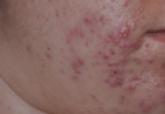Article

Severe Phymatous Rosacea of the Nose, Cheeks, and Chin Treated With Hydrosurgery
- Author:
- Julie M. Bittar, MD
- Stephen J. Kovach, MD
- Chérie M. Ditre, MD
The authors present the case of a 75-year-old man with severe phymatous rosacea of the nose, cheeks, and chin who was successfully treated with...
Article

Comparison of Salicylic Acid 30% Peel and Pneumatic Broadband Light in the Treatment of Mild to Moderately Severe Facial Acne Vulgaris
- Author:
- Rattapon Thuangtong, MD
- Chinmanat Tangjaturonrusamee, MD
- Pinyo Rattanaumpawan, MD, PhD
- Chérie M. Ditre, MD
Acne patients experience not only a medical disease but also an aesthetic condition, and this latter complication greatly motivates patients to...
Article

Comparison of Pneumatic Broadband Light Plus Adapalene Gel 0.3% Versus Adapalene Gel 0.3% Monotherapy in the Treatment of Mild to Moderate Acne
- Author:
- Chinmanat Tangjaturonrusamee, MD
- Pinyo Rattanaumpawan, MD, PhD
- Chérie M. Ditre, MD
Acne vulgaris is a common and distressing condition that typically presents in adolescents and young adults.
